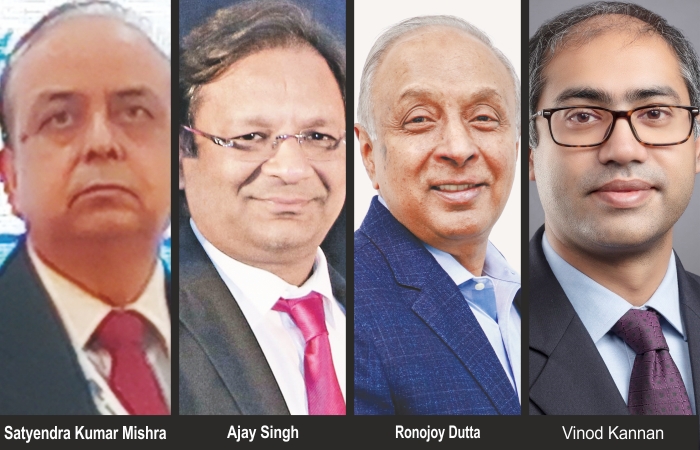As aviation markets opened up, domestic airlines are on the path of revival riding on pent-up demand. But rising fuel prices are giving a bumpy ride to the aviation sector. Experts talk about the way ahead at a brainstorming session recently.
Nisha Verma
The CEOs of the aviation sector discussed the global outlook, key trends and synergy between Indian and global aviation markets at Wings India 2022, held recently in Hyderabad. As commercial air travel is being revitalised with the government opening up the skies once again, the experts mulled over how the sector’s growth story can be driven.
Beyond fuel
Ajay Singh, CMD, SpiceJet said, “The aviation industry has huge potential; we need to get the cost base right. It’s not only the fuel, the GST department imposed IGST on parts that we are preparing overseas and getting them back. The operators have large volumes of accumulated credit. There is a lot of pressure from the department to pay the amount owed to them despite the government giving the credit. Even the banking sector is not ready to lend it any money (future credits). Some of the credit limits of the industry are also being considered to be removed. Even for ECLGS, the sector has used `250 crores. However, the losses go beyond `20,000-`25,000 crores. Hence, while the ECLGS money is helpful, in the larger scheme of things it is quite irrelevant, because if the banks say that I will lend money if the government guarantees, then the aviation sector will get a small sum.”
An exciting sector
Ronojoy Dutta, Director and CEO, IndiGo, said, “We give 21 per cent of our revenue straight to the government in terms of taxes. No industry in the world will produce a 21 per cent margin just to pay the government. This is an issue that needs to be addressed immediately, but still I believe it is a very exciting sector to be in.” Stating that seven per cent of Indians are flying at present, Dutta said, “About 65 per cent of Indian traffic is carried by the foreign airlines. During the ongoing COVID-19, we had demands for charters from Tashkent, Milan and Manila. Earlier these people travelled by transiting through Dubai or Singapore. However, now we can take them non-stop. There is so much growth here.”
Growth is real
Echoing similar sentiments, Sunil Bhaskaran, CEO & MD, AirAsia India said, “In terms of growth, the sector is looking good. However, if one looks at costs, consumption and the rate, they say a different story. Indian aviation is efficient in terms of numbers, but I think we are saddled by the high cost of fuel and high indirect cost.” Talking about the capital needed, he added, “In our balance sheets, the fixed cost element is small.”
Fresh in the sky
Vinay Dube, Founder and CEO, Akasa Air, which is set to launch in June, believes it is the right time to enter the sector. “If you look at it 20 years from now, you will have 1,000 or 2,000 aircraft. If Akasa comes or does not come, it will not make a difference because this is an India story and not an India aviation story. Hence, we believe that in those 2,000 more aircraft flying, why a few cannot be Akasa aircraft. If we are able to run a good, tight airline, serve our customers and employees well, we can find our way in creating a robust franchise,” he claimed. He said, “We need all the tax reliefs demanded by all airlines. However, in the early 2010s, for a few years, the fuel price was US $110-120 across the world. Still some airlines found a way to make money. This means it can be done.”
Full service future
Speaking on the speculated merger of Air India and Vistara, Vinod Kannan, CEO, Vistara, said it is an evolving conversation amongst shareholders. “It is a fact that 80 per cent of the market is currently low cost, and so in the domestic space, there are certain constraints or pressures. However, it is a growing population, which is upwardly mobile. Hence, having competition, whether it is Air India or Jet Airways 2.0, it is going to make things better because the customer will have more options. We will have the upper middle class among others moving upwards transitioning from one to the other. However, it is not just fuel. As a domestic airline, your inputs are in rupees, which is a depreciating currency and 70 per cent of your costs are in US dollars, which is foreign currency. Hence, the math does not make sense. Still we are eternal optimists and we have weathered the storm partly because of the Indian customer’s support and partly because of our resilience. However, there is hope at the end of the tunnel,” he claimed.
Tackling the prices
Believing from the efficiency perspective, Bhaskaran said the airlines are best in terms of efficient utilization of fuel, costs structure and all elements. “For too long the air fares in India have been at very low levels, despite the taxes and the fuel rates. I don’t think airlines have tested what could be the potential on the revenue side. Now that all of us are constrained by the fuel prices, I think we will see some increase on the fare side, forced by the fuel price levels,” he said
Singh claims that we need to first fix the taxation issues and fuel cost. “This time when fuel prices went up, the airlines increased the fares. People have got used to paying less for a flight from Delhi to Mumbai than they pay for taxi fare from the airport back home. Let us keep a reasonable fare because this is one industry that for no reason keeps selling below cost. The basics of any business ought to be that you will sell above your cost and, as the fares were increased due to fuel price hike, the bookings did not decrease much,” he claimed.
Government perspective
Reacting to what the airlines had to say, Satyendra Kumar Mishra, Joint Secretary, Union Ministry of Civil Aviation, said that airlines talk about short-term constraints—fuel cost and capacity at the airports. “We are hopeful that this sector is resilient and is going to have big growth,” he mentioned. “The government is aware about the constraints. Issues such as the excise part, infrastructure bottlenecks are being taken up. The government is facilitating on all the fronts that they can take it forward so that this industry thrives,” he claimed. “Airlines should think about carbon reduction. They are aware that huge costs will be imposed on them, and this is the time when we have to think in terms of SAF,” said Mishra.
Focus on international
Mishra said, “We have a huge market in the international sector. I think if some of the airlines focus towards the international sector, they should give room to other smaller ones in the domestic sector and think more towards capacity augmentation. Despite the government’s efforts, most traffic and bilaterals are taken over by foreign airlines,” he claimed.
Commercial flight of Akasa Air in June
Vinay Dube, Founder and CEO, Akasa Air, said, “We hope to launch our first commercial flight this year. We need or get all our licensing done. It’s challenging as this is an industry that is steeped in safety. Hence, one wants to make sure that the processes are extremely rigorous and challenging for the licenses to be issued.” He said this while addressing the Wings India 2022 held recently in Hyderabad. “Our first commercial flight will be coming up in June and we hope to have 18 aircraft on ground as part of our fleet within the 12 subsequent months and then every year after that 12 and 14 aircraft will get us to about 70 to 80 aircraft in five years. We are very excited and hope to serve our customers with warmth, affection and kindness,” Dube said.
 TravTalk India Online Magazine
TravTalk India Online Magazine





